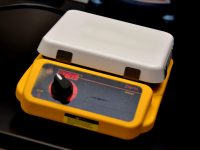Crackle Test: Do You Know Your Detection Limits? The crackle test has always been an accepted test within the oil analysis community. With its roots in engine oil analysis the quick and simple test is considered effective in detecting over 500 ppm of water. But as you migrate away from engine oils into industrial oils…
Read more
Crackle Test: Do You Know Your Detection Limits?


